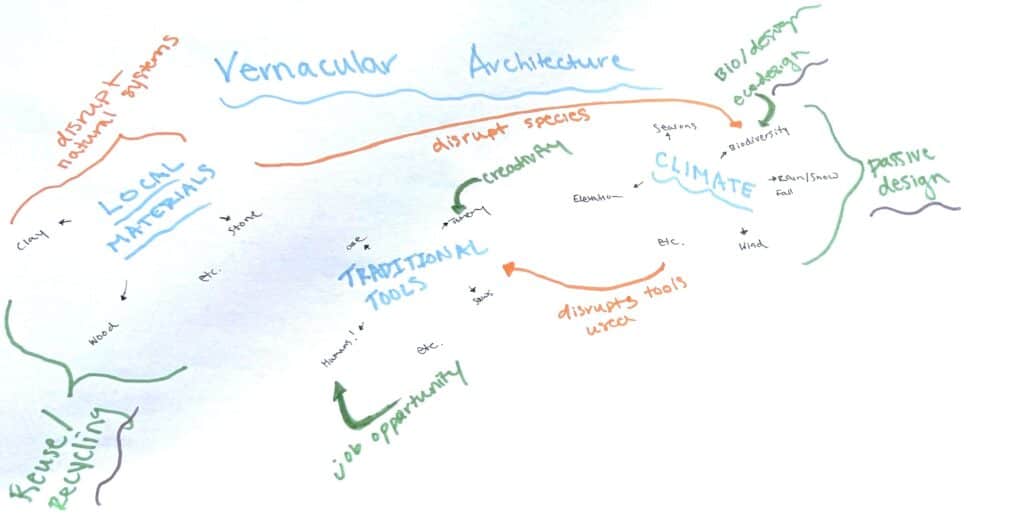As the urgency of the climate crisis pushes designers to reimagine their roles and tools, biodesign steps in as a frontier? More than just drawing inspiration from nature, biodesign involves working with living systems—fungi, algae, bacteria, roots—to grow materials and shape forms in ways that align with ecological processes. It reflects a deepening desire to move from extractive design to regenerative collaboration, where architecture and materiality are no longer static but alive, evolving, and embedded in cycles of growth and decay.
From mycelium bricks to algae-based bioplastics and bacteria-binders, biodesign invites us to explore a different relationship with time, matter, and maintenance. It challenges the permanence we’ve long pursued in the built environment and replaces it with adaptability, and symbiosis. Architecture, in this light, becomes less about dominance and more about dialogue—with ecosystems, with organisms, reuse of waste.

Challenges
Alongside this promise lies a growing tension. Many of the most compelling examples of biodesign rely heavily on computational modeling, advanced fabrication technologies, and access to biotech labs. Complexity—once a hallmark of nature—is now increasingly rendered through algorithms, AI, and high-resolution data sets. Inspired by termite mounds or coral growth, biomimetic forms offer insightful proposals , but often require robotic arms and digital fabrication units to bring them to life. Are these innovative technologies At the same time, we must acknowledge that integrating biodesign into the industry at scale is a slow and uncertain process. It demands sustained research, rigorous testing, new regulatory frameworks, and a willingness from both designers and manufacturers to rethink established systems.
This raises a critical question: in embracing complexity through technology, are we drifting further from the accessibility and wisdom embedded in traditional crafts and vernacular knowledge?
Moreover, are we fully accounting for the carbon footprint and material impact of these technologies themselves? The servers, sensors, plastics, and custom-machined components that enable “green” innovation often carry their own ecological cost—challenging the narrative that technological solutions are inherently sustainable.
Vernacular architecture across the world has long demonstrated an intuitive understanding of place, material, and climate. From earthen walls to woven palm roofs, these low-tech systems exemplify a kind of biodesign before the term ever existed. They adapt, breathe, and biodegrade—often with little to no carbon footprint. Yet in today’s discourse.
To be truly transformative, biodesign must confront this gap. It should not only seek innovation through advanced biology and computation but also through reconnection—with the embodied knowledge of craftspeople, the resilience of ancestral techniques, and the ingenuity of communities who have long built with nature, not against it.


